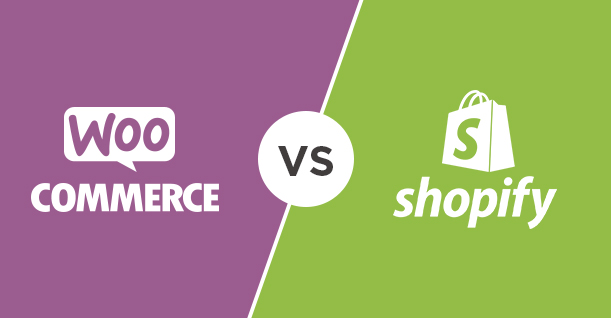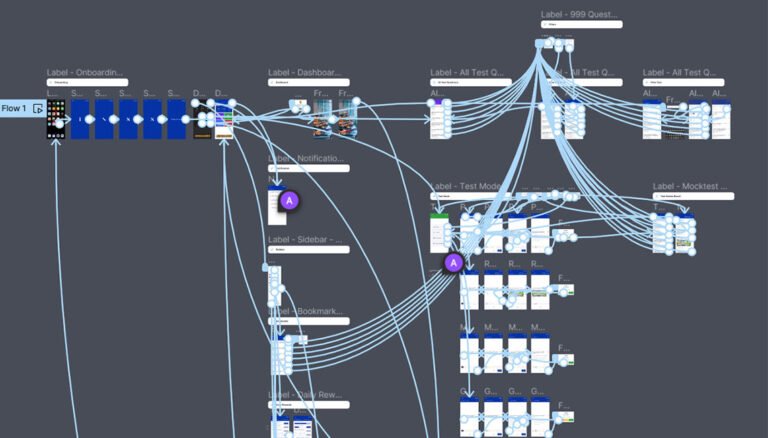WooCommerce(WordPress) or Shopify?
At the very start of our journey into the world of ecommerce, we had to make very key pivotal decisions that would be irreversible and ultimately determine whether we would succeed or fail. Such choices were revolved around questions like:
- Shopify vs WooCommerce(WordPress)?
- FBA vs Drop-shipping vs White Labeling?
- Ads vs Social Media vs Blogging?
- Physical vs Digital vs Services?
- Etc etc.
To save you from scrolling down to find out what we did, we have bolded our decision making.
One dominant overarching theme for this project was to reduce any and all costs and expenses. We wanted to prove to ourselves that not only could we bootstrap this project, but also make it profitable in record time and in time, make it self-sustainable as well. We wanted to document our journey to show that it’s actually possible. Also, as it was the first time for all team members in this sector, it didn’t make any sense to pour money into something we hadn’t done before.
Reasoning behind our ecommerce roadmap
Here’s the breakdown of some of our thought processes:
- The only difference between Shopify and WordPress for us, was the cost. WordPress can do what Shopify could do at a fraction of the cost. The only actual expense was purchasing the domain name and hosting services. This will set you back somewhere around $50 with 90% mainly for yearly hosting services (We opted for Hostinger). Compared to a $500 price tag for a Shopify theme and a monthly $30 with various paid plugin costs which would put you at around $1000 for the first year.
*Although it is important to note that in later stages of growth, it is highly recommended to purchase the Elementor Pro to take advantage of all features of WordPress and WooCommerce.
- We wanted to accurately measure success metrics and have more control over the outcomes. As such, Amazon FBA and a complete dropshipping order fulfillment process were not the best choices. Limited to one platform would mean our success was also limited. We would have been subject to the platform’s policies and algorithms that we simply had no control over. Literature also suggests whispers of Amazon using questionable tactics to take over a certain market or completely run vendors out of business if they deemed it profitable according to their own calculations. And we haven’t even mentioned the exorbitant inventory storage, fulfilling, and transaction fees which would make a huge dent on the final profit margins (for reference, Amazon will take a 15% cut on just the transaction fees). If you’re under someone’s roof, you play by their rules. Same goes for Shopify by limiting the ecosystem to a select number of plugins that all webmasters must use. WordPress allowed for more plugin options and personal customization for zero costs.
- The pure dropshipping business model is unsustainable. The quality can never be controlled and your entire revenue will be dependent on your manufacturers. If you are unable to control the quality, then the rate of refunds and complaints are also out of your control. Manual white labeling will help with controlling the quality of the product as well as with branding and custom design packaging for a much better customer experience.
- There’s a lot of content online showcasing successful pure dropshipping approaches . Product procurement is based on the immediate trending and popular products found using 3rd party tools and then being one of the first sellers on the market before moving on to the next shiny object. This type of business model was never even considered, due to the anticipated endless cycle of finding new products to rinse and repeat. Our goal was to set in place key ingredients to optimize full potential automation: outsourcing.
- Our studies into marketing indicated that SEO(search engine optimization) would produce the highest ROI due to the virtually nonexistent cost if we were to do it ourselves. One well-written blog would continue to produce value and organic traffic throughout its lifetime.
- In accordance to our overall bootstrapping theme, we chose a physical product due to its low entry barrier. Several months were spent in researching various industries, markets, and products to find a niche market with customers of ample buying power and personally interesting enough to all team members so we didn’t get bored having to create content on something we had no interest in.
- Comparing Shopify, Amazon, Etsy, and WordPress, we decided to go with the highest technological barrier platform. Not only did it provide us with the most flexibility and customization, but also scalability in skills. All team members have become adequately proficient in WordPress and WooCommerce that can be easily transferred into future website projects.
We have also picked up and sharpened some crucial skills that can overflow into businesses such as digital marketing, sales, project management, business management, budget management/allocation, business operations, as well as branding to name a few. Overall, the experience has been extremely beneficial in personal growth and professional growth. For those who have the same appetite for growth, we strongly recommend you to try ecommerce. It wasn’t easy but it wasn’t difficult either.
What’s the mindset for ecommerce?
You should consider your first ecommerce website as a sort of internship; a baptizing of holy water. There will be so many things you will need to overcome and so many details left out. With startups, nobody talks about all the things you have to become proficient in. It is near impossible to not become a generalist when you are required to do everything in the beginning. With any other profession, sufficient time invested in reading materials and tutorial videos will be essential to your journey.
Everyone wants to be a founder, but they don’t understand exactly what that means. Being the leader sucks because you’re ultimately responsible not only for your performance but also for the performance of your entire team, the market, your investors, your competitors, and even your customers.(Calacanis, Angel)
It is worth mentioning you should not look to try to win the lottery and try to make a fortune from one site. If you already built one site, all preceding websites should be extremely easy to duplicate and set up. Once you have your first site stabilized and automized, look into other industries and business models. Such that you do not have to solely rely on one revenue stream and the pressure to earn from each website will decrease linearly.
Another worthy mention is to record and document all repeatable tasks and processes. This is called building an SOP(standard operating system). The goal is to gain freedom and that means freedom of time. It doesn’t make sense to make your side-hustle into another job you create for yourself. To get started, we highly recommend you read our notes on the best book on building internal systems.(make link to e-myth revisited book notes. Don’t forget to delete this Alok)
What to outsource?
Once you have a manual setup you can start looking to allocate your work to others. Keep in mind that this is a continuous work in progress where you continue to update and reinforce your manuals and SOPs. Whenever questions or issues arise make sure you document them and either update the process or leave it writing for the next team member to read.
You should have a clear idea of a list of tasks you plan to outsource. It should look something like this:
- Content creation
- Social media accounts
- Advertisements
- Order fulfillment
- Customer service
- SEO publishing
- Product procuring & listings
- Periodic business analytics & reports
- Branding
- Taxes
A good rule of thumb is to calculate what your personal hourly rate is. And any task that is below that rate should be ruthlessly allocated to someone else.(Naval Ravikant)
The nitty gritty advantages and disadvantages of particular platforms(ie WooCommerce, Shopify, Etsy, Amazon FBA, standalone website, etc) will be omitted as there is already a lot of content that goes into great detail of the individual characteristics.
If you are unsure which platform to choose from, we highly recommend you start with WordPress/Woocommerce. It will provide you with the most tools, customization, with the highest cost-effective price tag. Although we have seen numerous webmasters hire an IT outsourcing team to transition from a third-party platform to a standalone website in later stages, there is absolutely no need to spend more money than you need to. You are only buying bragging rights. Your customers will not know the difference from the front side anyway. All of your updates and upgrades will be tied down to the development team. You will also be needlessly increasing your monthly expenses to continue to have the outsourced team on payroll.
If you go with WP, you can learn exactly how to solve your own problems with many open forums and videos you can educate yourself for free.
Shopify, the only difference it provides is security and a few automated tasks but those benefits are not enough to offset the price tag on Shopify. If you decide to go with Shopify, you will probably want to buy a good template that will run you around $500 and a monthly subscription for $30. Once again, needlessly increasing your exposure to risk by trapping yourself in a monthly expense.
Our advice is to go with the cheapest option and then you can always upgrade or migrate your domain to a different platform if you have outgrown WP.
What’s the next step in ecommerce?
All things considered, it becomes evident that the evolution in product types should be complementing previous product type limitations and transitioning to an automated process. In other words, the next level of products to sell should be fixing the problems of the previous product while increasing the ROI of your work and especially your time.
The trajectory should look something like this:
B2C → B2B → Software → Platforms → Services
- Physical products(Consumer products)
This has the lowest entry barrier. It is as simple as setting up a website and including a markup from the product you found on Alibaba. Amazon and Shopify could handle the bulk of the work. WordPress is preferable.
Ex: shiny toys, cool gadgets, clothing.
- B2B products
Supplying businesses with product means less orders, less fulfillment requirements, less hassles, less refunds, less customer service, less issues, less product listings-basically less work, more time and a much higher absolute amount in profits per unit.
Ex: military equipment, heavy machinery, medical supplies.
- Software products
Digital products are extremely expensive on the frontend investment but scalability is through the roof. The relative upkeep is extremely low with minimal support and maintenance. Refunds are virtually easy. Mobile apps dominate this area.
Ex: pdf editors, image editors, FPS enhancers, e-books.
- Digital Platforms
In simple terms, apps and websites. This type of business allows your customers to interact with each other. This takes a major burden off by utilizing UGC(user generated content). You have now officially become the house with its own roof. Your house, your rules.
Ex: SNS platforms, second-hand market apps, dating apps.
- Services
This is where you see all the content creators, gurus, and coaches selling their courses, selling a dream. You start selling your actual time for an actual monetary return. Selling a solution or expertise is the game. Agencies dominate this area.
Ex: life coach, travel agency, IT outsourcing, freelancing, remote work.
If one had the patience to experience all five areas, they would be set for life especially in the cusp of the CASPER and AI era. Also it would be extremely mentally stimulating because knowledge and skill would clash giving birth to wonderful pigments from cross-pollination of ideas.
It seems like we’ve listed and categorized all digital ventures. It is worth mentioning that most people only choose 1 or 2 of those steps and still become financially successful. Think about it, there are those who skip ecommerce and directly go to build an app. And there are content creators who start selling merchandise and services after they have gathered a following. If you have chosen to follow the entire roadmap(or perhaps like us, the roadmap chose you), bear in mind that this is a multi-year journey, but so was college eh?
Our current status looks like this:
- Launched our own B2C ecommerce website using WordPress.
- Already in possession of an ecommerce template, we are contacting various factories and manufacturers for collaboration potential.
- Continuing to build apps and proof of concepts.
- Allowing clients to tap into our network and provide IT outsourcing as a service.
It is easy to see that in the end all roads lead to digital ventures. If one truly aims to become financially free and self-sufficient, it is the right way. Logically it makes total sense, because to be truly free means to have the ability to control your own time; where you work, when you work, who you work with, and what you work on. And, in order to have time there must be a very strong presence of automation.







